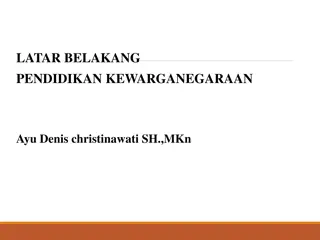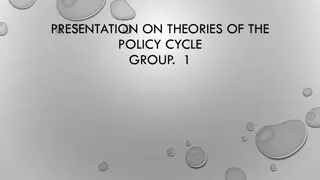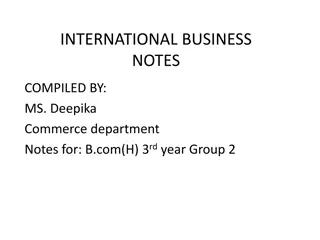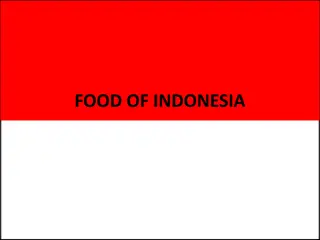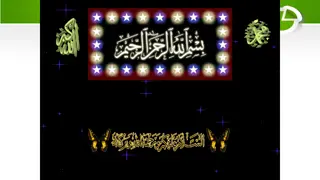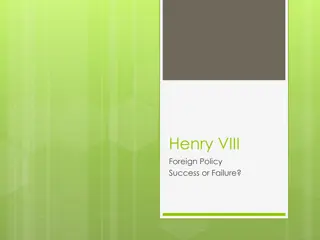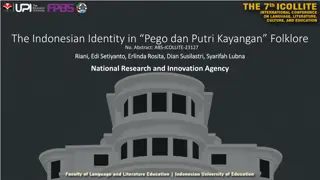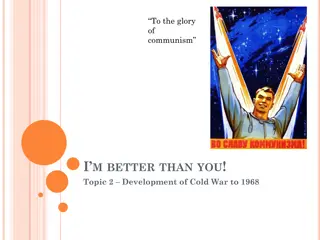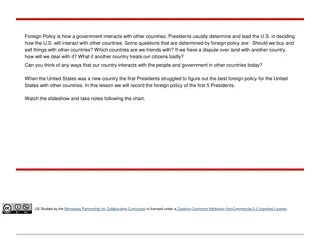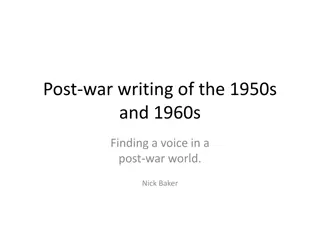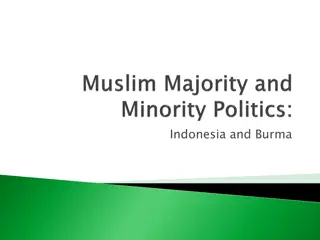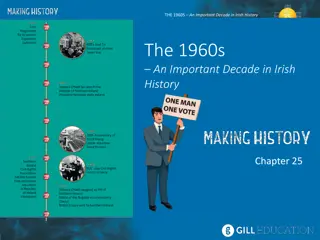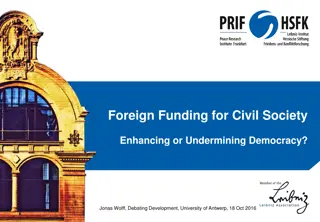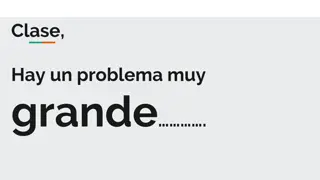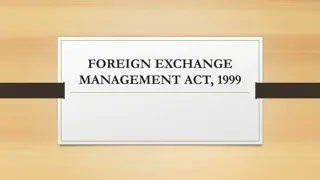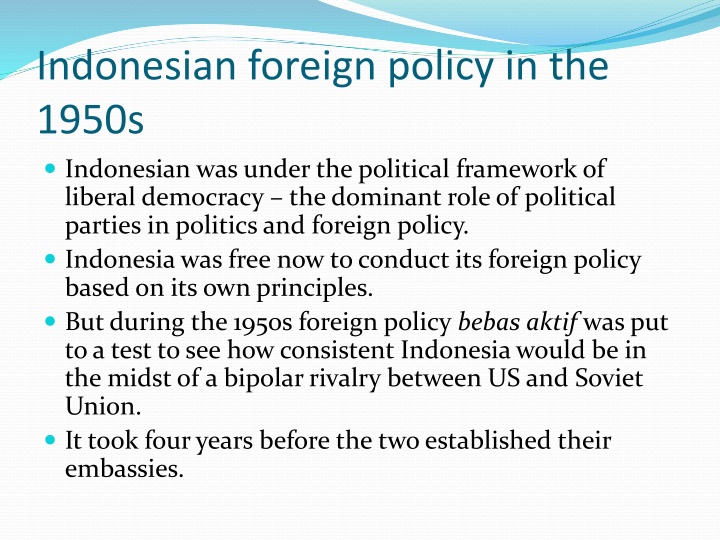
Indonesian Foreign Policy Evolution: 1950s to Global Significance Today
Explore Indonesia's foreign policy journey from the 1950s, where it navigated through a changing geopolitical landscape, to its current role as a key global player. Witness the shift from liberal democracy to guided democracy under Soekarno and the implications on international relations. Discover Indonesia's present-day significance as a member of the G20, a leader in ASEAN, a moderate Islamic power, a mediator in conflict resolution, and a stabilizing force in Southeast Asia.
Download Presentation

Please find below an Image/Link to download the presentation.
The content on the website is provided AS IS for your information and personal use only. It may not be sold, licensed, or shared on other websites without obtaining consent from the author. If you encounter any issues during the download, it is possible that the publisher has removed the file from their server.
You are allowed to download the files provided on this website for personal or commercial use, subject to the condition that they are used lawfully. All files are the property of their respective owners.
The content on the website is provided AS IS for your information and personal use only. It may not be sold, licensed, or shared on other websites without obtaining consent from the author.
E N D
Presentation Transcript
Indonesian foreign policy in the 1950s Indonesian was under the political framework of liberal democracy the dominant role of political parties in politics and foreign policy. Indonesia was free now to conduct its foreign policy based on its own principles. But during the 1950s foreign policy bebas aktif was put to a test to see how consistent Indonesia would be in the midst of a bipolar rivalry between US and Soviet Union. It took four years before the two established their embassies.
The result of Indonesias consistency was mixed. Under the PM Soekiman Indonesia could not resist the temptation of signing MSA with the US. In 1954 Indonesia decided not to join SEATO In 1955 Indonesia was successful in conducting AA Conference as the hybrid of Non-aligned Movement.
However, after visiting Moscow and Beijing, Soekarno changed his mind and began to radicalize both his domestic and foreign policy. At the same time, the Indonesian Communist Party made aggressive efforts to build its power. There was a triangle competition among Soekarno, PKI and the Army (AD).
In 1959 Soekarnodeclared the end of liberal democracy and the beginning of Guided Democracy. The element of anti-colonialism was very strong in his foreign policy. Soekano s proposed the dichotomy between NEFOS or The New Emerging Forces (and then GANEFOS) and OLDEFOS or The Old Forces. The liberation of Irian Barat in 1962. The project of Ganyang Malaysia as its independence was seen as the project of imperialist powers (US and UK).
The establishment of Jakarta Phnom Penh Beijing Pyongyang. Indonesia got closer to the Eastern Bloc and got economic and military aid. Indonesia s preoccupation with radical foreign policy cost her the neglect of economic development.
Indonesia sebagai aktor dalam politik global saat ini: Indonesia anggota G 20 (an emerging market participating in finding solutions to the global economic crisis) Indonesia sebagai pemimpin tradisional di ASEAN (sense of regional entitlement) through Bali Concord I, II and III. Indonesia sebagai kekuatan Islam moderat (bisa mengkombinasikan Islam dan demokrasi) dipandang sebagai sekutu Barat melawan Islamic radicalism. Indonesia diakui sebagai kekuatan menengah (middle power) dalam konteks kerjasama MIKTA (mediator dalam penyelesaian konflik di kawasan seperti mendorong diterimanya COC di Laut China Selatan). Indonesia sebagai salah satu penentu stabilitas regional di Asia Tenggara. 1. 2. 3. 4. 5.
Referensi: Rizal Sukma (1995). The Evolution of Indonesia s Foreign Policy: An Indonesian View . Asian Survey, Volume 35 No. 3 (March 1995). pp. 304 315. Suryadinata, L. (1996). Indonesia s foreign policy under Soeharto, aspiring international leadership. Singapore: Times Academic Press.

